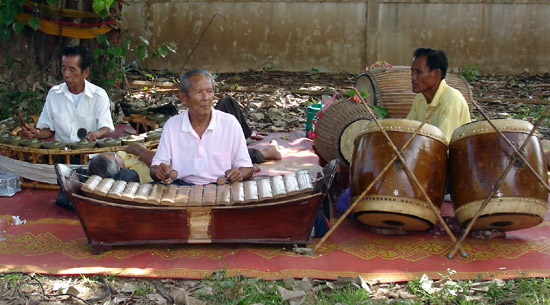Music: Music Overview
Musically speaking, Thailand is a study of history and fusion in constant flux. As a byway on the ancient Silk Routes and now the most popular tourist destination in Southeast Asia, Thailand has always been a cultural hub. In fact, many of Thailand’s traditional instruments are the product of cultural exchange, such as the jakhe zither (of Indian origin) and the klong kaek (from Indonesia). Thailand has many indigenous classical traditions such as the piphat ensembles and the country’s plethora of province-specific dance forms. Present-day travelers to Thailand will find themselves in a musical whirlwind of Thai country and pop-oriented luk thung, Buddhist chants, protest songs, Bangkok hip-hop and Hill Tribe music.
Origins and Influences
The music of Thailand reflects its position along the trade routes of the Silk Road that have historically connected China, India, Persia, Africa, Greece, and Rome. Thai musical instruments are equally varied and reflect ancient cultural exchange—including the klong thap and khim hammered dulcimer (Persian origin), the jakhe (Indian origin), the klong jin (Chinese origin), and the klong kaek (Indonesian origin). Thailand’s ubiquitous piphat is exemplary of this cultural fusion. Piphat ensembles combine fiddles, oboe-like wind instruments, gongs, cymbals, xylophones, and a circular set of tuned gong-chimes, much like the instruments and ensembles from neighboring regions in Southeast Asia and the large gamelan ensembles of Indonesia.
Sukhotha was the capital of the Thai Empire for approximately 140 years. The kingdom existed from 1238 to 1438 and gave birth to many forms of classical music and dances such as the Rabam Apsara Shiva Rai. Ayutthaya was a Siamese kingdom that existed from 1350 to 1767. Though music was outlawed in the royal courts of this era, “commoner” music seemed to flourish. The rammana (drum) and chakhe (flute) were introduced to Thai music, as were gamelan instruments such as the ranatek.
Pop and other forms of modern Western music have become extremely influential; in the first half of the 20th century, jazz-influenced popular music was widespread in Bangkok. Truly indigenous popular song developed after World War II, based on singing styles of classical Thai forms. The two most popular styles of traditional Thai music are luk thung and the Laotian-derived mor lam.
Article written for World Trade Press by Matthew Monte.
Copyright © 1993—2025 World Trade Press. All rights reserved.

 Thailand
Thailand 